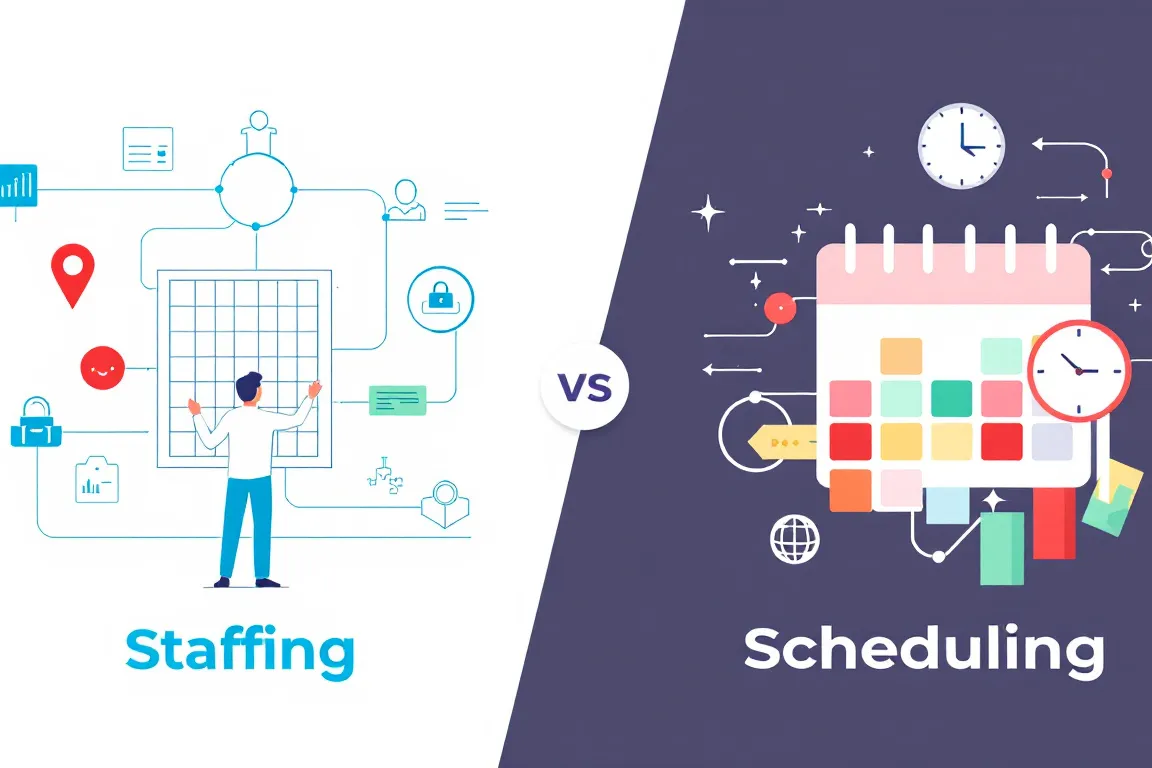When a member of their workforce is repeatedly absent without prior permission, they can be described as engaging in absenteeism. Although businesses have to contend with their staff missing work for a variety of reasons, the most challenging of these are unplanned absences and unexpected absences that they can’t control.
Absenteeism, also known as workplace absenteeism, not only impacts a company’s bottom line but also on their staff’s productivity and morale. It is important to distinguish between different types of absences, as legitimate reasons such as medical leave or personal emergencies are typically considered an approved absence and do not count against absenteeism metrics. This post explores the idea of absenteeism, its causes, and the best ways to minimise it.
Introduction to Absenteeism
Absenteeism in the workplace refers to the habitual or frequent absence of an employee from their job, often without a valid reason. While some employee absences are unavoidable and approved—such as those for jury duty or family emergencies—others may stem from underlying issues like mental health problems, workplace harassment, or ongoing family responsibilities. Employee absenteeism can lead to significant indirect costs for businesses, including lost productivity, decreased morale among other employees, and increased operational expenses. To effectively address absenteeism, it’s crucial for employers to distinguish between approved absences and unapproved or excessive absences. Establishing clear attendance policies helps set expectations for employees and provides a framework for managing both legitimate and unauthorised absences. By proactively addressing absenteeism in the workplace, employers can foster a healthier, more productive environment and reduce the negative impact of lost productivity and indirect costs.
What is employee absenteeism?
Absenteeism is a term used to describe a pattern of unplanned, unexplained, or unauthorised absences from work, with habitual absences being a key concern for employers.
Common causes of absenteeism include:
- excessive absenteeism, which can result from recurring issues such as stress, poor workplace culture, or ongoing health problems
Absenteeism is often used as a metric to measure absence rates and employee attendance, providing businesses with important indicators to monitor and address.
Sickness or injury
The most common type of unplanned absence is sick leave, when an employee misses work due to illness or injury. An employee feeling unwell, whether due to physical or mental health issues, is a common reason for absence. Managing sickness absence is a hard balancing act for businesses. On one hand, you want staff to stay away if they’re genuinely sick, but, on the other, you want to minimise sick days. As we cover later in this article, doing your best to keep your workforce healthy—including addressing mental health issues as well as physical health—is the main thing you can do to prevent sickness absence.
Stress and mental health issues
Nearly half of employees report needing help managing stress, highlighting how widespread this issue is in the workplace.
An employee is just as likely to take time off for stress as for reasons related to their mental health as those pertaining to their physical health, and the most common cause of this is stress. Persistent levels of elevated stress can make it hard for many workers to face the day, which can result in their absence from work. If such stress is left unaddressed, it will eventually lead to burnout.
Low workforce morale
If your workforce struggles to get along with one another or frequently clashes with management, workers are more likely to be absent. This can lead to a lack of engagement with their job and less loyalty to the company – further decreasing their motivation to come to work. Improving employee engagement can help address absenteeism related to low morale, as engaged employees feel more valued and motivated to contribute positively to the organization.
Lack of flexible working practices
If your company doesn’t have any flexible working practices in place, this can result in employees ‘managing their own time’ and contributing to a culture of absenteeism. Flexible working arrangements can help improve work life balance and lead to a better work life balance for employees, which in turn can boost morale and reduce unauthorized absences. This includes employees with children who struggle to consistently secure reliable childcare, with childcare challenges being a common reason for irregular attendance. The same could be true of staff with sick or elderly relatives, as well as those with similar responsibilities outside of work that requires them to take time off at short notice.
Absenteeism is an important metric for businesses because it acts as a strong indicator of their staff’s health, morale, and level of job satisfaction.
Types of Absenteeism
Absenteeism refers to various patterns of employee absences, each with its own causes and implications. Chronic absenteeism occurs when an employee is habitually absent over a prolonged period, often indicating deeper issues such as ongoing personal challenges or disengagement. Occasional absences are typically one-off or short-term, resulting from personal reasons like a family emergency or car trouble. Unplanned absences, such as sudden sick days, can disrupt workflow and are often the most challenging for employers to manage. It’s important to differentiate between excused absences—such as annual leave or sick leave, which are approved and documented—and unexcused absences, which occur without valid reason or advance notice. Unexcused or frequent absences may lead to disciplinary action if they become excessive. By understanding the different types of absenteeism, employers can tailor their absence management strategies to address both the needs of their employees and the operational requirements of the business.
What are the effects of absenteeism and lost productivity?
Absenteeism can have a significant impact on a company’s productivity and, consequently, its profitability. Decreased productivity is a direct result of absenteeism, as teams struggle to maintain output levels when employees are not present.
First and foremost, when employees are absent, they can’t contribute to a company’s output. However, they still contribute to the business’ costs, especially if they have their own employee sick pay scheme – but at the very least they’ll receive statutory sick pay. In addition to these ongoing expenses, companies may face direct costs, such as hiring temporary staff or outsourcing work to cover for absent employees.
This absence can go on to affect the rest of the absent employee’s colleagues, some of whom will have to work harder to make up for their not being there. If this happens frequently, this can put a dent in morale, especially if people perceive a member of staff to be ‘getting away with’ not coming into work. At worst, it may cause other workers to intentionally push the boundaries of their attendance and timekeeping to see if they’re treated in the same way as their frequently-absent colleagues. At this point, absenteeism has seeped into your company culture. A hostile work environment and workplace bullying can also contribute to absenteeism and low morale, making it even harder to maintain a positive workplace culture. Poor leadership can further exacerbate absenteeism problems by failing to address these issues effectively.
For the employee, on the other hand, being off frequently makes it harder to feel like part of the team. They won’t have spent as much time with their colleagues and, as touched on above, there’s a chance their co-workers resent them for constantly ‘leaving them in the lurch’.
Absences can be caused by a variety of factors, including personal circumstances such as health issues or family emergencies, as well as job hunting activities like attending interviews or meeting with recruiters.
Also, if they’ve been absent for reasons related to mental health, and their absence from work causes them to fall behind on their workload, this can further add to their stress and anxiety.
Ultimately, absenteeism can negatively impact employee experience and employee retention, making it crucial for organizations to address the root causes and foster a supportive work environment.
Calculating Absenteeism
Understanding and tracking absenteeism rates is essential for employers who want to reduce absenteeism and improve employee wellbeing. To calculate absenteeism, employers typically monitor the number of employee absences over a specific period, either per individual or across the entire workforce. One widely used method is the Bradford Factor, which considers both the frequency and duration of absences to highlight patterns of concern. Absence management software can greatly benefit organisations by automating the tracking process, making it easier to identify trends and calculate absenteeism rates accurately. By regularly reviewing these metrics, employers can spot issues early, implement targeted interventions, and support employee wellbeing more effectively. This data-driven approach not only helps reduce absenteeism but also contributes to a healthier, more engaged workforce.
How to Address Absenteeism
Effectively addressing absenteeism requires a comprehensive strategy that goes beyond simply tracking absences. Employers should start by identifying the root causes of excessive absences, whether they stem from personal issues, workplace challenges, or a lack of engagement. Regular check-ins between line managers and employees can help uncover these underlying factors and provide opportunities for support. Clear attendance policies are essential, outlining expectations and consequences for excessive absences, and ensuring all employees understand the procedures for reporting absences. Training line managers to handle absenteeism with empathy and consistency is also key to maintaining a positive work environment. By proactively addressing absenteeism, employers can reduce lost productivity, boost employee wellbeing, and foster a culture of accountability and support.
Communicate
The primary way to deal with absenteeism is to talk to employees who frequently take time off from work. By addressing the employee, and their attendance issues, directly, and being very clear about their consequences—such as company policy triggering disciplinary action after three unexcused absences—you can nip them in the bud quickly. The employee may have an underlying issue, you’re unaware of, that contributes to their frequent absence and, subsequently, that you can support them through.
Additionally, you should document the fact that you addressed their absenteeism and made them aware of what would happen if it were to continue, including the enforcement of disciplinary action after three unexcused absences. This will work in your favour if you ever have to dismiss them and they contest the decision in a tribunal.
Publish your absence policy
Ensure you have an absence policy that clearly states what your company requires in terms of notice for an absence to be considered authorised. Your policy should also be compliant with employment law to avoid legal issues and ensure it meets all legal requirements. You also need to outline the consequences for repeated unauthorised absences. That way, if, down the line, you have to dismiss an employee, they can’t claim they weren’t aware of what would happen.
If you already have an absence policy, remind your employees where to find it, and of its most important points, if absenteeism starts to spiral out of control.
Track absences
Track staff absences so you’re aware of how frequently they occur and can spot patterns. HR managers play a crucial role in monitoring and analyzing this absence data. This is significantly easier with absence management software, which will tally up the number of days off each member of staff has taken automatically and help track the absenteeism rate. The software also assists in identifying patterns of unscheduled absences, allowing HR managers to address potential issues promptly.
In addition, absence management software also features a staff holiday planner which details how frequently each of your employees takes annual leave. If you’re concerned about the wellbeing of a member of your workforce, and suspect they might be on the verge of burning out, the holiday planner will reveal how much annual leave allowance they have left – and when they last took a day off. You could then suggest they take a few days to recharge.
Invest in Workplace Health Initiatives
Investing in workplace health initiatives is a powerful way to reduce absenteeism and promote employee wellbeing. Employers can offer a range of employee wellbeing programs, such as mental health support, fitness classes, and healthy eating initiatives, to encourage staff to prioritise their health. Access to employee assistance programs (EAPs) can help employees navigate personal challenges, including childcare issues or caring for an elderly relative, reducing the likelihood of unplanned absences. Financial incentives, such as wellness bonuses or rewards for good attendance, can further motivate employees to maintain their health. Additionally, providing opportunities for personal development and growth helps employees balance their work and personal lives more effectively. By demonstrating a commitment to employee wellbeing, employers not only reduce absenteeism but also create a more engaged, resilient, and productive workforce.
Invest in workplace health initiative
Work towards decreasing sick leave in by investing in workplace wellness initiatives. This can include improving the air quality, investing in ergonomic furniture, and championing short breaks throughout the day to encourage movement. Many companies subsidise their employees’ gym or health club subscriptions to promote regular exercise. It is also important to provide resources and support to address health concerns, including both physical and mental health, ensuring employees have access to the help they need.
Similarly, invest in your company culture with team-building events or social activities in which everyone can get to know each other a little better outside a work setting.
Reduce stress to reduce absenteeism
In an effort to reduce your employees’ stress levels, invest in measures that promote mental health, as well as physical health. This could include introducing, or improving, your company’s flexible workplace measures, such as remote working and duvet days. Perhaps you could have a town hall meeting, or something similar, where your employees suggest the type of measures that would help them most. These initiatives are effective in reducing absenteeism and can also increase productivity by supporting employee wellbeing and engagement.
Also, just as importantly, start to establish your company as one in which people can come forward and feel comfortable to talk about their mental health struggles without fear of judgment or, worse, discrimination. Failing to address stress and mental health can result in absenteeism problems that negatively impact the organization.




